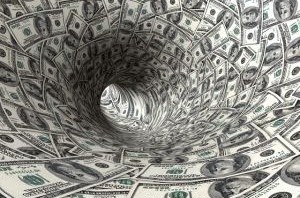A big part of my job as a business development manager for Vigil Health Solutions is to uncover new senior housing projects. This task has both tactical and strategic goals. The tactical goal is to uncover opportunities where we can propose our emergency call system. The strategic goal is to maintain an understanding of trends in senior housing, allowing us to optimize our products to meet the needs of those communities and the seniors they serve. Over the last two weeks I have uncovered two new communities, Boom, in Palm Springs and Fountaingrove Lodge, in Santa Rosa, both of which are targeting the gay and lesbian community. It got me to wondering if creating an affinity community is a brilliant evolution in the senior housing industry or a trap that limits the ability to market a community and fill units. In truth, affinity senior housing communities have existed for decades with faith based communities leading the way. There are also at least two very successful communities that are exclusively for retired military officers Air Force Village and Air Force Village West.
For the most part, these first generation affinity communities were developed and operated by not-for-profit organizations to meet the unique needs/lifestyles of their constituent communities. Andrew Carle, a recognized expert in senior housing and the founding director of the Program in Assisted Living/Senior Housing Administration at George Mason University, estimates that there are about 100 affinity senior housing projects in North America. He makes the point that it takes about 200 residents to create a successful retirement community. He seems to be suggesting that we can expect more affinity communities across a wide spectrum of interests. Just imagine: – A community for the fans of The Beatles or The Rolling Stones. Maybe there is an opportunity for the Hard Rock Cafe to expand into senior housing. – A cruise ship that becomes a permanent home, to seniors who love to travel the world. – A community for aging nudists conjures up some “interesting” visual images.
The downside is that this specialization has the effect of reducing the potential pool of residents. There is no doubt that location is a big issue. Residents want to live either in the same community where they have resided for many years or in a community that is close to family. The question is, how far from home and family will residents move to reside in an affinity based community?
Another consideration is that many seniors will not want to live in a community with narrow interests. They will want to have a variety people to interact with, to make friends with, in their new living environment. I believe we will continue to see an expansion of affinity communities. Some, like those that are faith based, learning based and gay and lesbian, seem to naturally lend themselves to the concept. Other ideas will be harder to sell and we may very well see some colossal failures. The challenge will be in assessing the market potential of a new idea prior to making a big commitment of resources.
Just for fun I would be interested in hearing your ideas for a new affinity community.
Steve Moran









I live at Pilgrim Place, an intentional community in Southern California, that, although it already had functioned as such for many years, officially became a ccrc about fifteen years ago. Although not officially an “affinity community”, because of its founding as a place for Congregational (now United Church of Christ) missionaries coming home from the field, it has a long history of being a community where members share a common set of understandings and values. As we have broadened our community, first to include clergy from other denominations, then church workers more generally, followed by those who dedicated their lives to human service, and now any who believe in the value of living in community and who share the values of our mission (Peace, Social Justice, Care of the Earth), we have undergone considerable changes. Yet, we continue to share two things — (1) we all appreciate and want to live in intentional community, where members all know and care for one another, and (2) we all desire to continue to put our values into action around the issues of peace, social justice, and the environment.
We continue to seek diversity in all other ways, including religion. There are times when the “business model”, necessary for survival, could seem to conflict with the values we emphasize; this can appear to be (and sometimes feels like) a difficult balance. But with active resident involvement in governance and open communication we have continued to work things out and to live lives of purpose well into our retirement years. There is no desire to provide a cruise-ship-type retirement with all the amenities. We make significant sacrifices compared to residents in some of our counter-part ccrcs nearby. But to live intentionally and lovingly with people who share our values has enhanced our later years considerably.